ISSN ONLINE(2320-9801) PRINT (2320-9798)
ISSN ONLINE(2320-9801) PRINT (2320-9798)
Sonu Rana1, Dr.Abhoy Chand Mondal2
|
| Related article at Pubmed, Scholar Google |
Visit for more related articles at International Journal of Innovative Research in Computer and Communication Engineering
This article based on project selection procedure of student with help of rough set approach insight into Bayes‟ theorem which help to compute to prior or posterior probabilities structure of the data being analyzed through which can draw conclusion of data and also compute the relationship in between Bayes‟ theorem and flow graph[11] and the granularity or conflict analysis of data can be represented in a form of a flow graph , and the relation between granules obeys Bayes‟ theorem that leads a new relation of data of decision table[12,13,16].
Keywords |
| Rough Set, Bayes‟ Theorem, Flow Graph, Conflict Analysis. |
INTRODUCTION OF ROUGH SET |
| Rough set theory is a new mathematical approach to imperfect knowledge. The problem of imperfect knowledge has been tackled for a long time by philosophers, logicians and mathematicians. Recently it became also a crucial issue for computer scientists, particularly in the area of artificial intelligence. There are many approaches to the problem of how to understand and manipulate imperfect knowledge. The most successful one is, no doubt, the fuzzy set theory proposed by Zadeh [2].Rough set theory proposed by the author in [1] presents still another attempt to this problem. The theory has attracted attention of many researchers and practitioners all over the world, who contributed essentially to its development and applications |
INDISCRENIBILITY MATRIX |
| Let I=(U, A) be an information system (attribute-value system), where „U‟ is a non-empty set of finite objects (the universe) and „A‟ is a non-empty, finite set of attributes such that a :U Va for every aA. „Va‟ is the set of values that attribute „a‟ may take. The information table assigns a value a(x) from „Va‟ to each attribute „a‟ and object „x‟ in the universe „U‟ with any B Athere is an associated equivalence relationIND(B) [3,4,5,6]. |
| Indiscrenibility-matrix is, |
III. UPPER APPROXIMATION, LOWER APPROXIMATION & BOUNDARY REGION |
| The indiscrenibility relation will be used next to define approximations, basic concepts of rough set theory. Now
approximations can be defined as follows: |
IV . INTRODUCTION OF BAYES’ THEOREM |
| The Bayes‟ theorem is the essence of statistical inference. The result of the Bayesian data analysis process is the posterior distribution that represents a revision of the prior distribution on the light of the evidence provided by the data” [7].“Opinion as to the values of Bayes‟ theorem as a basic for statistical inference has swung between acceptance and rejection since its publication on 1763” [8].Rough set theory offers new insight into Bayes‟ theorem [9]. The look on Bayes‟ theorem offered by rough set theory is completely different to that used in the Bayesian data analysis philosophy. It does not refer either to prior or posterior probabilities, inherently associated with Bayesian reasoning, but it reveals some probabilistic structure of the data being analyzed. It states that any data set (decision table) satisfies total probability theorem and Bayes‟ theorem. The Bayes‟ theorem is the essence of statistical inference. |
V . INFORMATION SYSTEMS AND DECISION RULES |
| Every decision table describes decisions (actions, results etc.) determined, when some conditions are satisfied. In other words each row of the decision table specifies a decision rule which determines decisions in terms of conditions. In what follows we will describe decision rules more exactly.Let S = (U, C, D) be a |
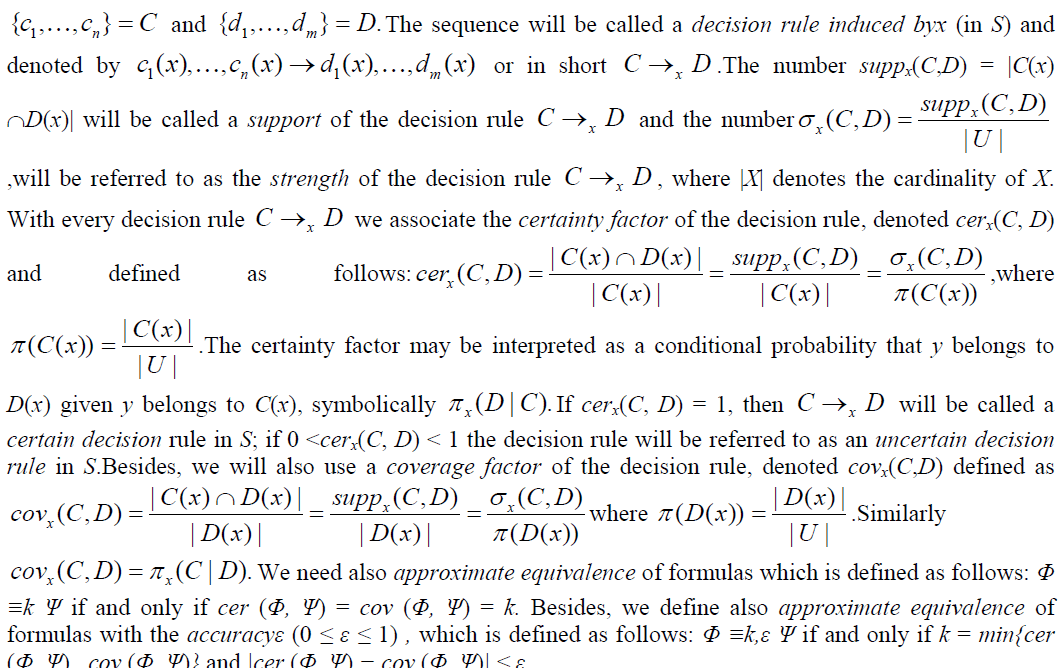 |
| An example of decision table shown in bellow Table1. In this table S1,S2,S3,S4,S5,S6 are students who are submitting their project and waiting for their selection, so, the selection procedure totally depended some conditions or criteria i.e. C1=Project field,C2=Project topic, C3=Project design, C4=Project implement, C5=Project performance. Table 1 illustrates the problem of finding the relationship between project selection conditions and decision conditions. |
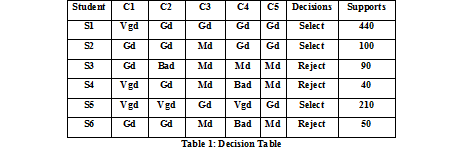 |
| The example provided above that some decisions cannot be described by means of conditions.However, they can be described with some approximations. So,the approximation of above table 1 are [10]- |
| The set {5} is lower approximation of the set {1,2,5} in which maximal set of facts that can be certainty classified as selection in term of conditions. |
| The set {1,2,3,4,5} is upper approximation of the set {1,2,3,4,5,6} in which the set of facts that possibly can be classified as selection in term of conditions. |
| The set {1,2,3,4} is boundary region of the set {1,2,3,4,5} in which the set of facts can be classified neither select nor reject of project in term of conditions. |
VII . COMPUTING STRENGTH , CERTAINTY COVERAGE FACTOR |
| for decision table are shown in Table 2. |
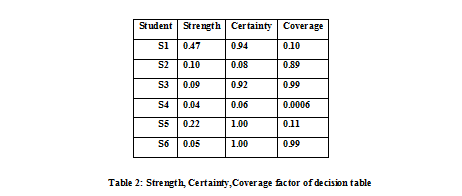 |
| Bellow a decision algorithm associated with Table 1 is presented. |
| 1) If criteria C1 vgd & C4 gd then Decision→Select |
| 2) If criteria C1 gd & C4 gd then Decision→Select |
| 3) If criteria C1 gd & C4 md then Decision→Reject |
| 4) If criteria C1 vgd & C4 bad then Decision→Reject |
| 5) If criteria C4 vgd then Decision →Select |
| 6) If criteria C4 bad then Decision→Reject |
| The certainty factor of the decision rules lead the following conclusion: |
| -94% student project have been selected . |
| -8% student project have been selected |
| -92% student project have been rejected. |
| -6% student project have been rejected. |
| -All student project have been selected. |
| -All student project have been rejected. |
| In other words : |
| -the most probability of select project 0.94 and 0.08 and all rejection probability 1.00 or selection probability 1.00. |
| Now let compute the inverse decision algorithm, which is given bellow : |
| 1‟) If Decision→Select then criteria C1 vgd & C4 gd. |
| 2‟) If Decision→Select then criteria C1 gd & C4 gd. |
| 3‟) If Decision→Reject then criteria C1 gd & C4 md. |
| 4‟) If Decision→Reject then criteria C1 vgd & C4 bad. |
| 5‟) If Decision →Select then criteria C4 vgd. |
| 6‟) If Decision→Reject then criteria C4 bad. |
| Now computing the inverse decision algorithm and the coverage factor we get the following explanation of decisions: -decision for select projects are most probability 0.10 if C1 vgd and C4 gd and decision for all select project probability is 0.11 if C4 is vgd.or probability for all reject project is 0.99. |
VIII . FLOW GRAPH |
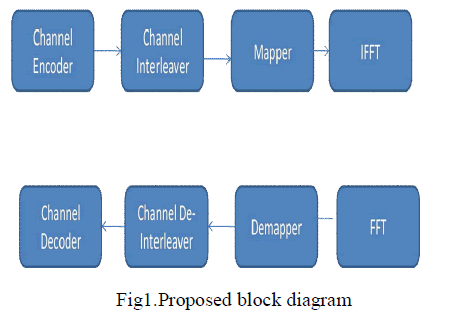 |
| So, with respect of rule 1 the condition C1 and C4 are approximately equivalent for selection project result where, k=0.89 and ε=0.81, and the C4 of project according to rule 3 is approximate equivalent to rejection result where, k=0.99, and ε=0.01 or selection result where, k=0.11, and ε=0.89. |
IX . CONFLICT SPACE and CONFLICT GRAPH |
| With every decision table having one n-valued decision attribute we can associated n-dimensional Euclidean space where values of the decision attribute determine n axis of the space and condition attribute values (equivalence classes) determine point of the space. Strengths of decision rules are to be understood as coordinates of corresponding points[14,15].Distance (x, y) between granules x and y in an n-dimensional decision space is defined as |
 are vectors of strength of corresponding decision
rules[16].Conflict Space for Table 1 is shown in Fig 2: are vectors of strength of corresponding decision
rules[16].Conflict Space for Table 1 is shown in Fig 2: |
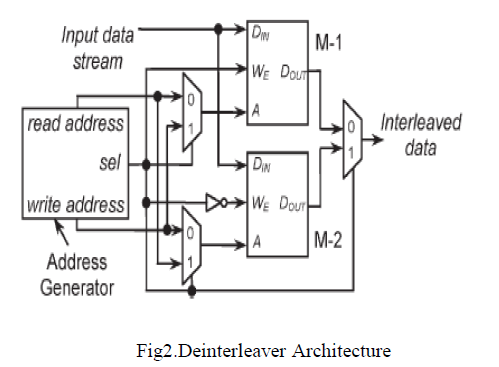 |
| So, the conflict graph or distances between granules (1,4),(2,3),(5),(6) are shown in bellow. |
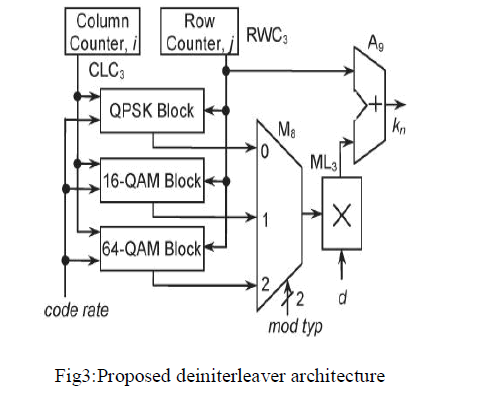 |
X . CONCLUSION |
| In this article, Bayes‟ theorem consists of prior or posterior probabilities and rough set approach to Bayes‟ theorem reveals data pattern, which normally used to draw conclusions from data in the form of decision rules[11]. Besides the rough set rules Bayes‟ approach invert rules for getting actual decision which shown in example in this article as well as it also help to associated to draw flow graph which gives a new tool to decision analysis.Besides, the relation between condition and decision granules are represented as flow graph and a conflict space is defined to analyze similarity of data granules[16]. |